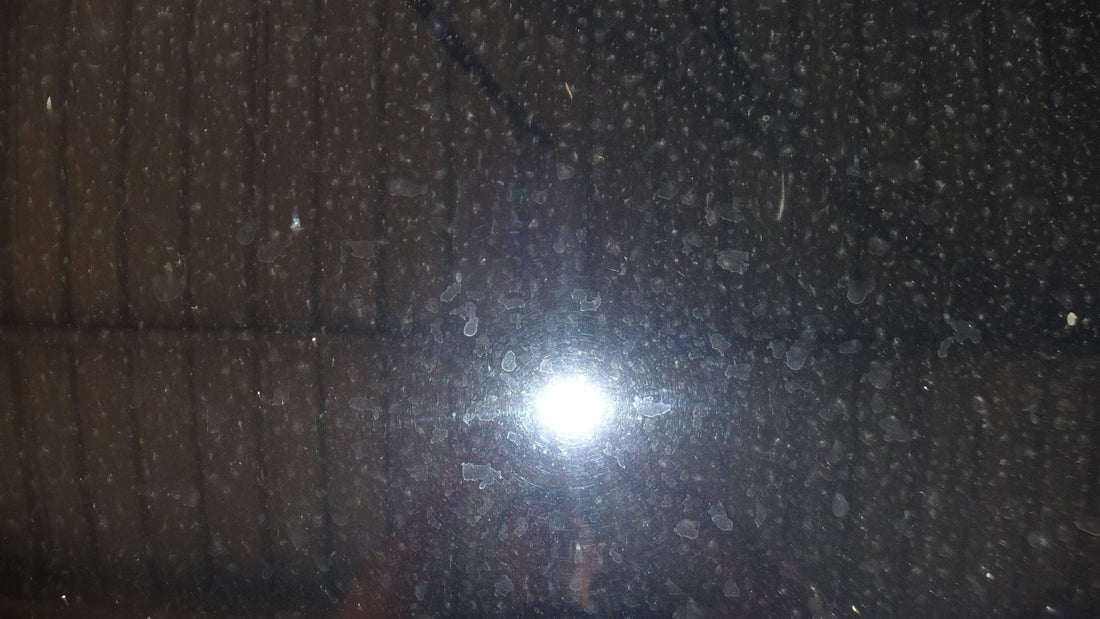Water spots can be easy to remove, they can be an absolute nightmare and can require wet sanding to remove, or worst case; the panel will need to resprayed if there’s not enough paint thickness left to remove them with wet sanding and paint correction.
Water spots can generally be broken down into 2 separate categories; mineral deposits (hard water spots) and chemical etching.
The first type of water spots to look at are mineral deposits, or sometimes known as hard water spots. These are from minerals in the water that are left when water has evaporated from the surface of the paint. This is most noticeable if you’re using normal town water for washing, and you’ve had to step away while water was still on the car - you come back and dry the car, but the water spots remain. These are mineral deposits now on the surface of your paint. Another way this can happen is from water sprinklers. The sprinkler leaves water on the car, the water evaporates and you’re left with spots from the minerals in the water.
These type of water spots can also be caused by leaving water to dry on your paint after it rains. The water mixes with dirt and other contaminants sitting on the paint, the water then evaporates and leaves the etching marks on the paint.
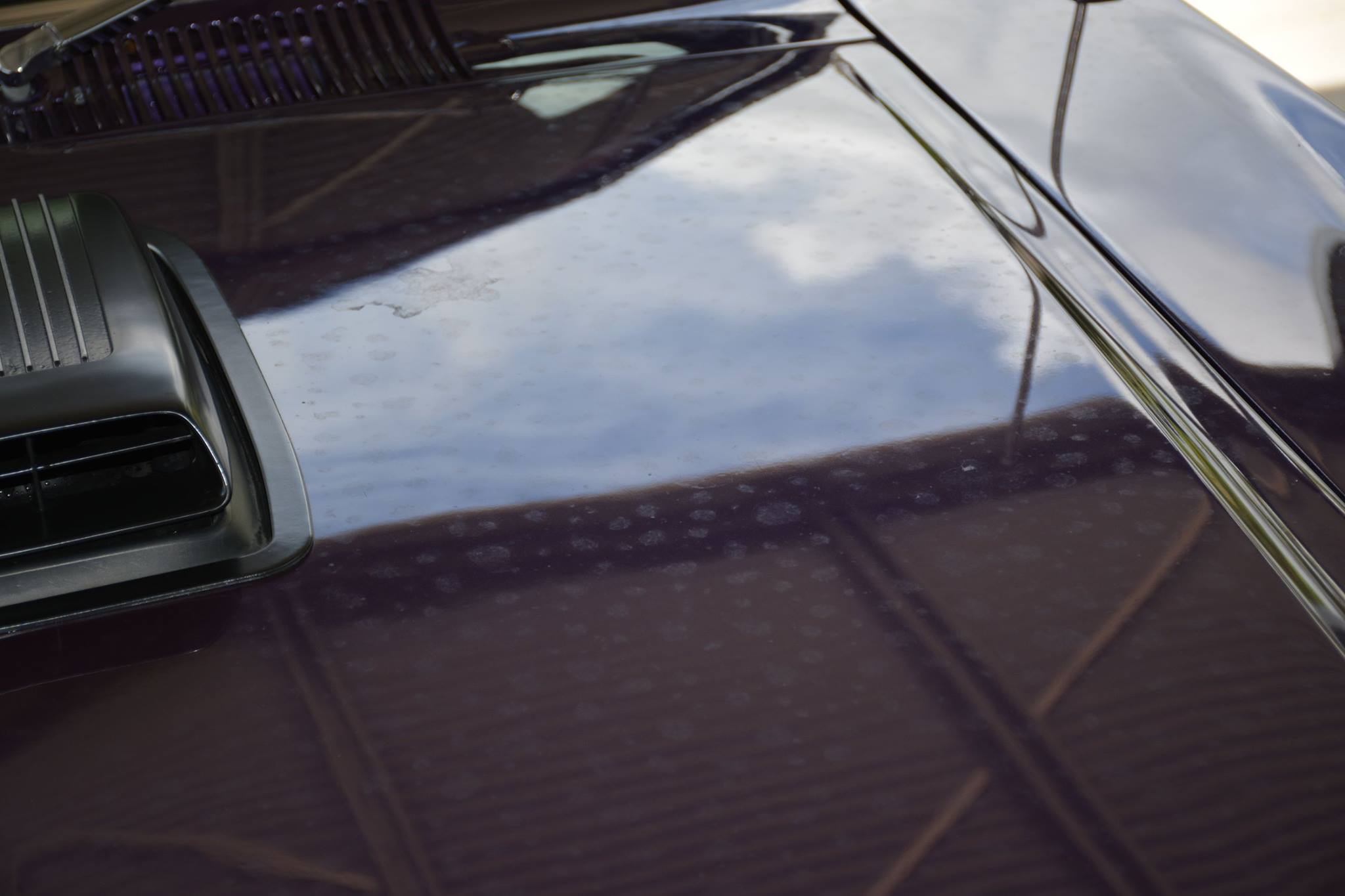
The second type of water spots are chemical etching. Chemical etching is caused when mineral deposits are left to dry for a long time on the paint and is often made worse by leaving the car outside in the sun. The minerals and chemicals in the water or on the surface haven’t been washed off and they’ve actually etched into the surface of the paint.
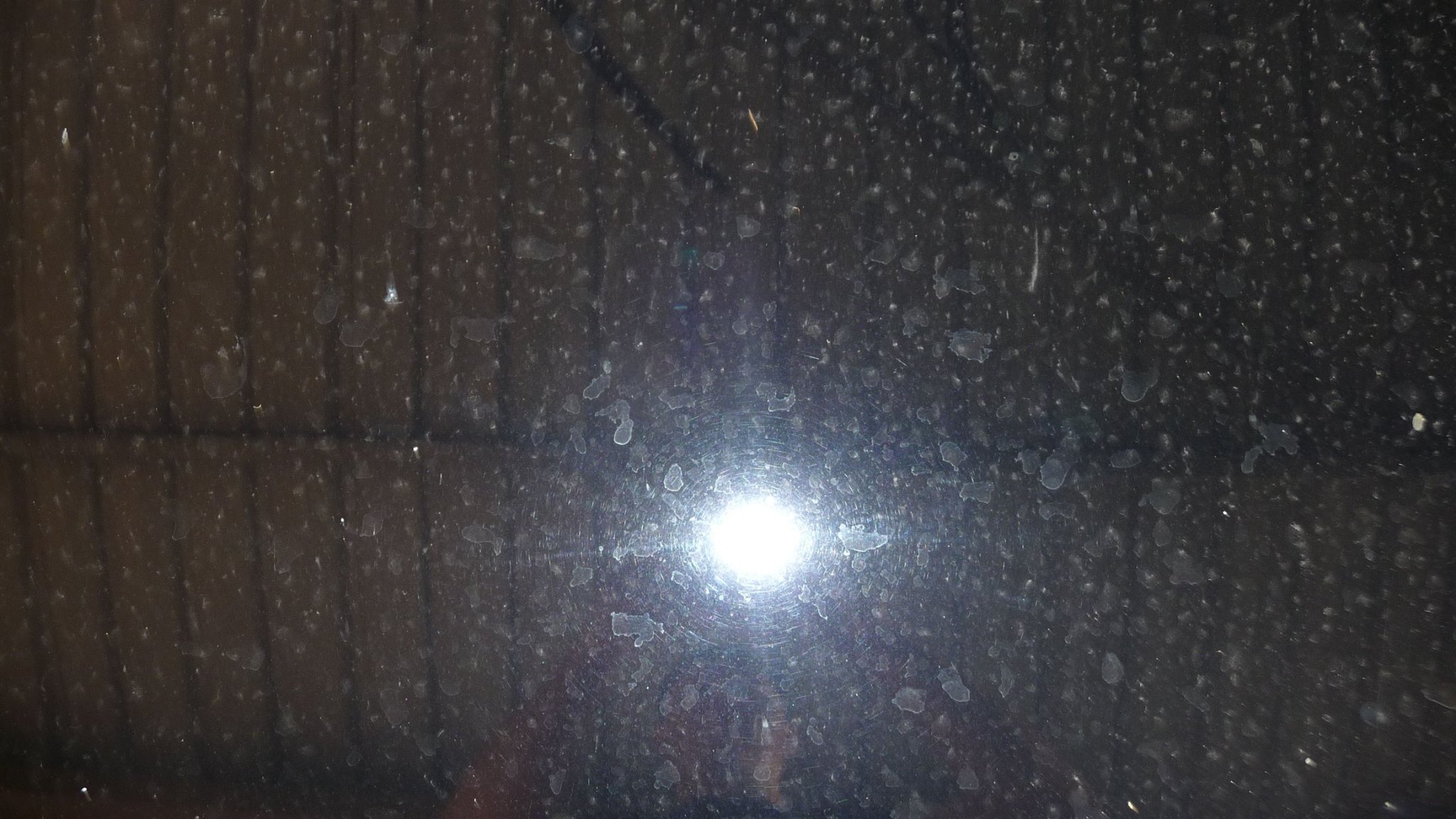
So how do we fix these marks?
Well, as explained earlier, this can be an easy job, or a horrifying experience.
Let’s look at removing mineral deposits first. Depending on how long the water spots have been there for will determine what method you’re going to use here, but we always start with the least aggressive method first, then work up to the most aggressive method until something works.
The least aggressive method we know of is to simply wash your car. I’d recommend that you use a double dose of your favourite wash (Nanolicious Wash, Wax Wash or Auto Body Gel), and give the car a good wash, and then dry. If the marks are still there, you can use our Boss Gloss quick detail spray with 2 Drop Bear cloths to aid in moving the marks.
If you’ve washed the car with a double dose of car wash and tried Boss Gloss and haven’t had any luck, the next thing to try is White Vinegar. White Vinegar is acidic in nature and will help remove water spots if they’re reasonably fresh and new. Wash and dry your car as per normal, put some White Vinegar onto a cloth like our Big Softie cloth, then gently wipe the affected areas. Add more White Vinegar as needed until all of the spots are gone. NOTE: Because White Vinegar is acidic, there’s a chance it will remove waxes and sealants on your car, so always be sure to put Lazy Wax, Fully Slick or Bead Machine back on the paint to help protect it from the elements when you’re done. Please note that White Vinegar shouldn't affect modern, professionaly applied ceramic coatings.
If you’ve used White Vinegar and it hasn’t done anything for the water spots, your next step in the progression of least aggressive to most aggressive, is Paint Cleanse & Restore. Paint Cleanse & Restore is non abrasive, but has great cleaning power for this sort of job. Use Paint Cleanse & Restore as per the instructions, then be sure to seal the paint with your favourite combination of our protective sprays.
What next?
If you’ve gone through these 3 methods of cleaning to try and remove water spots and they’re still hanging in there, your next option is an abrasive compound or polish. We strongly recommend that unless you’re handy with a DA or Rotary polisher, that you get a professional detailer to handle this task for you. The detailer should be able to advise you on inspection of the vehicle and the water spots what sort of job it will be.

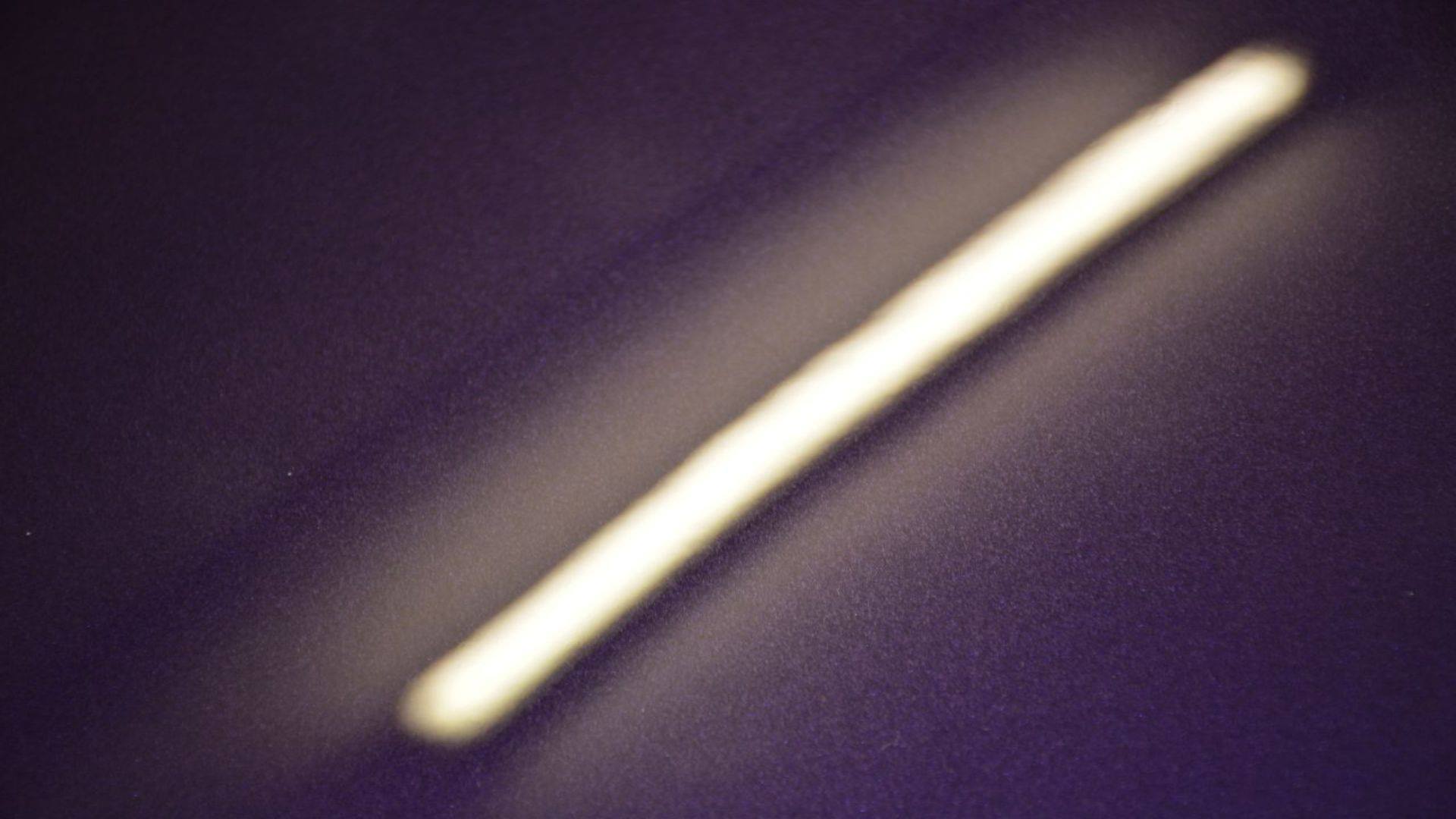
Chemical etching fixes?
Chemical etching is about as bad as it gets with water spots. Chemicals have literally etched and eaten into the clear coat or paint on your vehicle. The only option for these is heavy compounding, perhaps even wet sanding if they’re deep, or worst case scenario (which I have seen!), the panel will need to be resprayed. Again, these are definitely the domain of a professional detailer and we recommend you employ the services of one to inspect and advise you on which option to take here.
Glass etching
If you have water spots on your glass, you can use our Metal Polish. Metal Polish contains a very fine jewellers rouge that's perfect for polishing glass. Take one of our Dirty Deeds cloths and fold it into quarters, then apply a small amount of Metal Polish about the size of a 50c piece. Apply the Metal Polish to the glass where you want to polish and spread it evenly in a small area to start. Once the product has been lightly spread out, begin to polish the area with your cloth in a back & forth and side to side motion, using light-medium pressure. Once you’ve done a small section, use a second Dirty Deeds cloth to wipe the area clean and check your work.
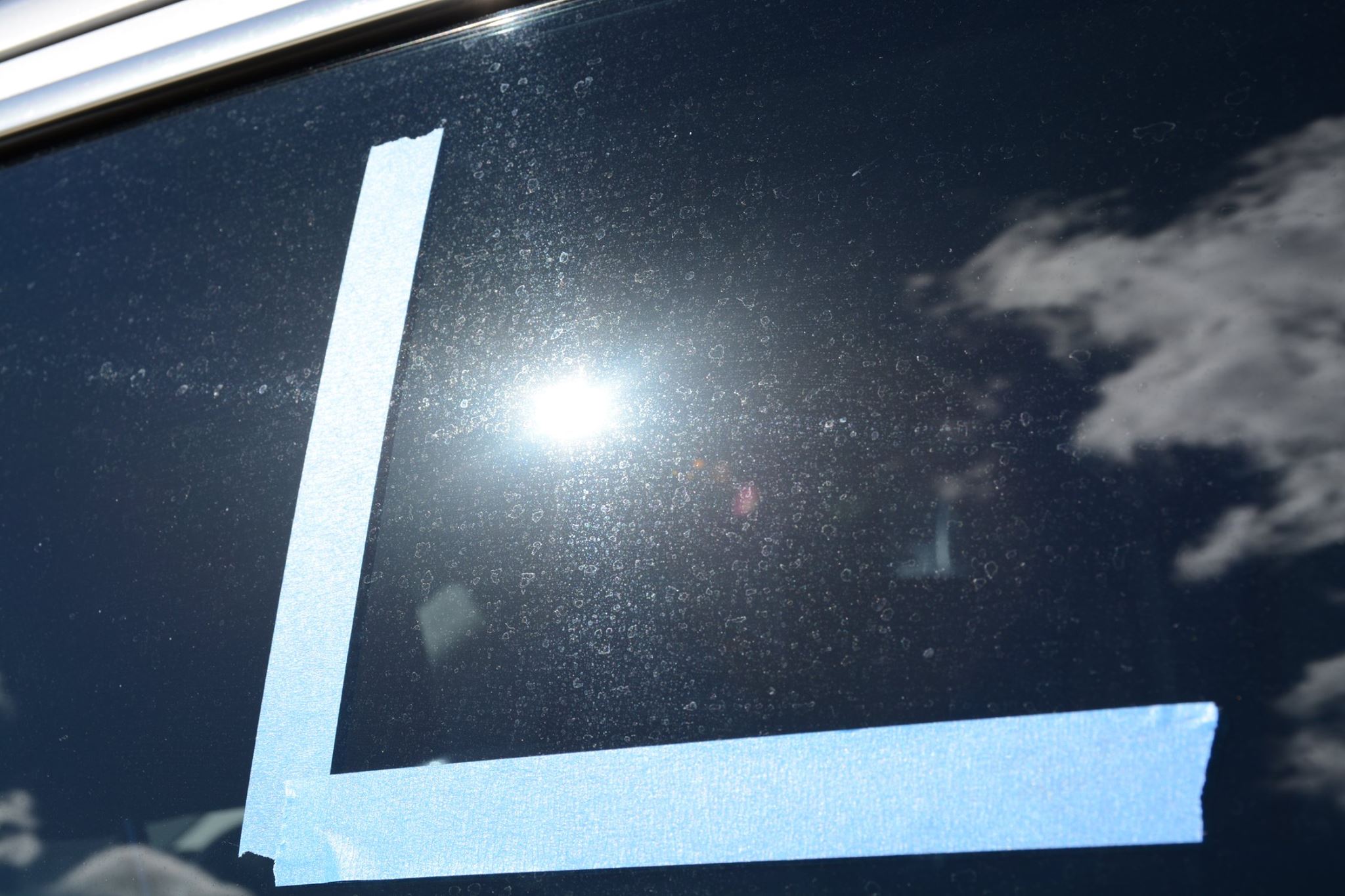
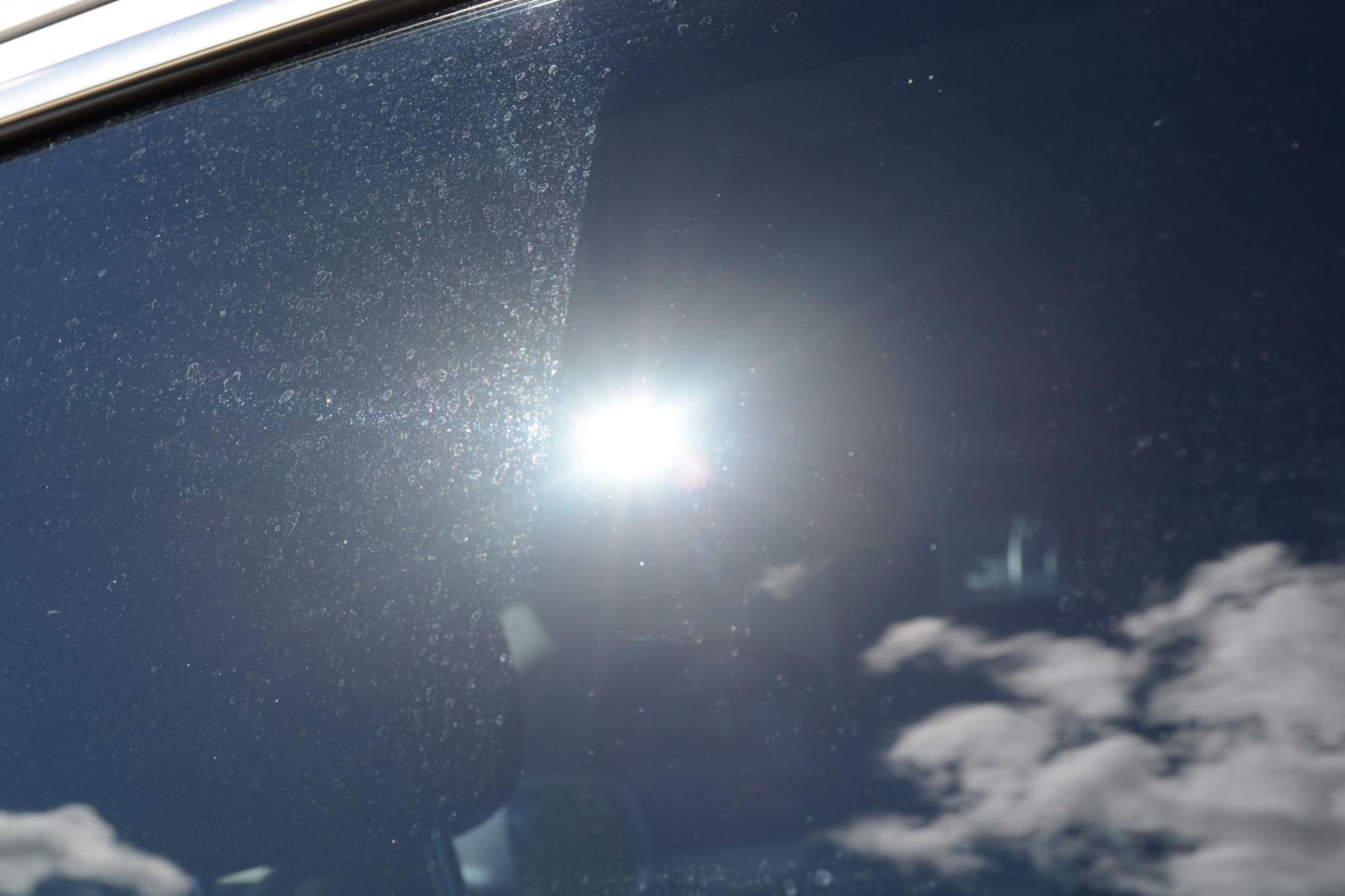
Prevention?
As with everything; prevention is better than a cure. If your vehicle is stuck outside in a rain storm, then the sun comes out and starts baking those minerals into your paint, try to wash the car that night, or at the latest, the next day. This will limit the time that the minerals have to create their havoc with your paint. Likewise if yours or your neighbours’ sprinkler has left water spots on your car, make sure you wash the car ASAP. The less time those minerals are the on the surface, the better.
As always when washing your car, make sure you don’t let water dry on there. If you’re washing in the direct sun and it’s really hot, be very vigilant with keeping the paint and glass wet so that it doesn’t create water spots. Wherever and whenever possible, wash your vehicle in the shade - early morning or late afternoon when it’s not so hot.
So this gives you a bit of a run down on the different types of water spots, what causes them and what can be done to fix them. I hope this has given you some information to help protect your car in the future.
If you have any questions, please email info@bowdensown.co.nz or FREECALL our car care experts on 0800 351 308.
Happy detailing,
Brett Hobbs

